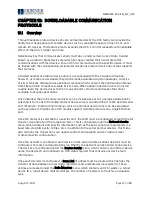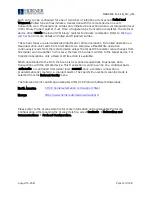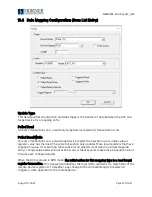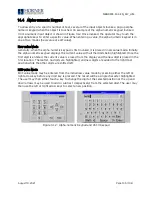
MAN0974-13.1-EN_XL7_UM
August 19, 2021
Page 134 | 198
14.3 Displaying and Entering Data
Figure 14.1
–
Example Screen
Multiple objects are provided for displaying data such as virtual panel lights, push buttons,
numeric value displays, bar graphs, meters, graphs and animated bitmaps. On the XL7, these
graphical objects (through ladder manipulation of attribute bits) can change color, flash or
change visibility to attract operator attention.
On objects that accept user input, the input is provided by touching the object or alternately
changing an OCS register (i.e. Function key registers). Objects that allow input generally have a
raised 3D appearance. An exception is the binary type objects, such as buttons, which are shown
in a depressed 3D appearance when in the ON state. Objects that normally accept touch input
may be disabled through program control (through ladder manipulation of an attribute bit). If an
object is disabled, the object’s representation changes to a 2D appearance.
On objects that represent non-discrete information, more action may be required beyond that of
simply touching the object. For example, the slider object requires the operator to touch and
slide
the control in the direction desired. Alternately, alpha-numeric entry objects invoke a pop-up
alpha-numeric keypad for additional user input. The alpha-numeric keypad is discussed below.
NOTE: If the numeric entry object displays >>>>>>>, the value is too big to display in the field or is
above the maximum for an editable field. Likewise, if the numeric entry object displays <<<<<<< in a
numeric field, the value is too small to display or is below the minimum for an editable field.
















































